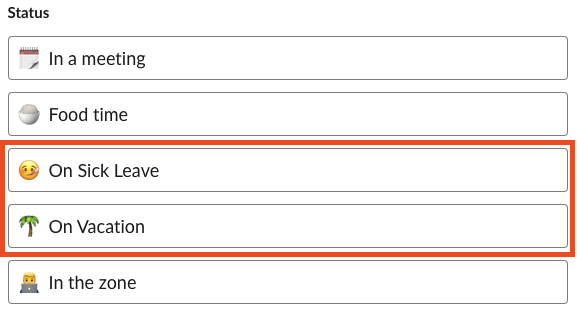Team Feedback

The team generally prefers to keep meetings to a minimum as more immediate and efficient means of communication are preferred. Though the team also understands that growing as individuals and an effective team takes regular and constructive feedback sessions.
Group Feedback
Daily Stand-up
Purpose
True to the core tenants of agile methodologies, the team holds the morning routine of daily stand-ups with everyone, including Engineering, Product, Sales, and Business Operations.
The stand-up is the occasion to have a company-wide overview of the daily progress and struggles.
Everyone must fill in the details to the following questions between 9:00 and 10:00:
- Work planned for the day
- Blocker or unexpected issues
While it is the norm for daily stand-ups to inquire about the work accomplished during the previous work day, the team decided not to include it with the explicit goal to focus on actionable information. Today is actionable; yesterday is not. Daily stand-ups are not meant to be a laundry list of achievements or an activity log. Git analytics, project management tools, and code repositories are much better at providing information on what has been completed at any given time.
Best practices
To avoid common pitfalls, the following guidelines must be followed:
- DO summarize your work activities using your own words.
- Do NOT list story titles or task links on a project management tool.
👉 Everyone works on different client projects, engineering initiatives, or personal objectives. That is why the narrative of the stand-up must remain at a high level while, at the same time, being worth-to-read for all team members, i.e., the report filled in by a team member should be understandable without being involved in the same project or initiative. Team members who do not work on the same project do not have access to the project management board and cannot make sense of the work to complete with a story title. Each team member must put themselves in the shoes of an outsider when writing their stand-up.
- DO set the correct Slack status when on leave.
- Do NOT feel forced to fill in the stand-up during personal or sick leaves.
👉 Since the team works in different countries with different holidays, the daily stand-up is triggered regardless of the location of each individual. At the same time, team members can be on sick or personal leaves at any time. To avoid receiving a request to submit the stand-up report and to communicate their current work status correctly, team members are responsible for setting their corresponding status.

Standuply uses the above statuses for the daily stand-ups:

Bi-weekly Retrospective
The retrospective can be held either 1) by a Chapter e.g. iOS retrospective on Wednesdays or 2) by a Squad.
The retrospective meetings are the occasion to:
- Review the previous sprint accomplishments and struggles.
- Plan future sprints.
- Present and review a new methodology or process.
These meetings are encouraged but not compulsory for every stack or project. Planning a project or stack retrospective is at the project’s Team Lead discretion.
Monthly All-hands
All-hands meetings are the opportunity to get an overall picture of the company’s recent achievements, challenges, and plans for the short and medium term.
Individual Feedback
Each team member reports to a specific lead in their area:
- Software engineers report to an Engineering Lead.
- Product managers, Project managers, and UX/UI designers report to a Lead Product Manager.
Monthly One-on-One
Monthly One-on-One sessions are an opportunity to review the successes and struggles openly and to make a checkpoint on objectives and skills development progress.
These sessions are also meant for teammates to provide feedback on the company, either positive or negative. The team’s goal is to keep a constant two-way communication channel.
Peers Feedback
Peers Feedbacks are the medium to provide comprehensive, detailed information to each team member on their successes and areas of improvement. It consists of the input of team members the individual has worked with and the Engineering Lead’s feedback.
Each Engineering Lead prepares the feedback summary for their respective reports.
Bi-yearly Skill Appraisal
“Skill Appraisal” is the re-evaluating and validation process of the engineering team members’ skills. Engineering Leads are responsible for executing this process by vetting the skill acquisition for their respective reports.
This process is crucial as it results in a developer’s Level and Compensation update.